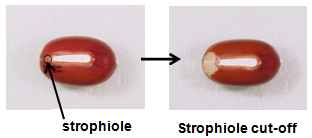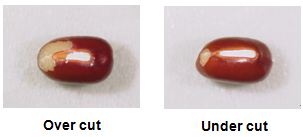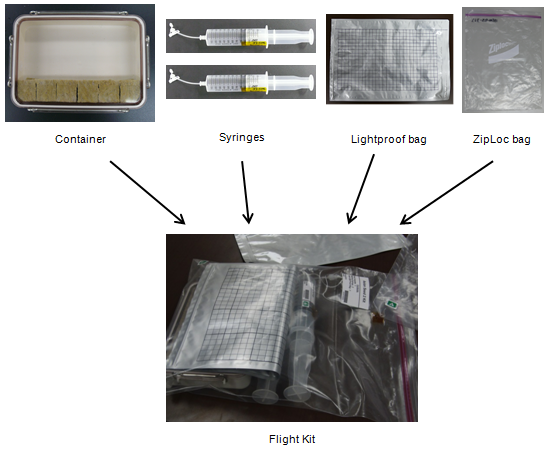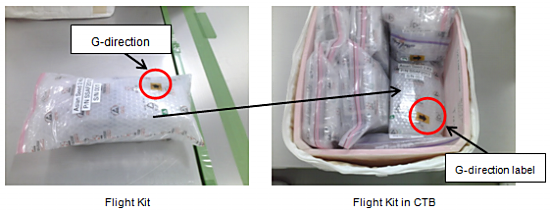This is an archive of information released in the past.
Disclaimer: It may contain broken links or outdated information. Some parts may not function in current web browsers.
*Visit https://humans-in-space.jaxa.jp/en/ for the latest information.

SSAF2013 Space Experiment Report: No.1 Ground Preparation
To conduct an experiment in the ISS, necessary experimental equipment should be prepared carefully before launching. For SSAF2013, we have prepared containers in which Azuki can grow as described below:
This article explains how to prepare the container for SSAF2013 flight experiment. This will be a reference when you carry out your ground experiments but it does not mean that you have to follow this method. A simplified example of ground procedures is given in this manual (p.7-9)[PDF:1.78MB].
Preparation Procedure
On July 5, 2013, preparation for SSAF2013 was made at JAXA's Tsukuba Space Center with the support of Osaka City University.
Materials
- Azuki beans Vigna angularis 'Erimoshozu' (18 beans for one box)
- Plastic container with clear lid (External: 21cm x 15cm x 5 cm, Internal: 18cm x 12 cm x 4 cm)
- Rock wool
- Cutter
Preparation Procedure
1. Fit watering and ventilation ports to the plastic container
2. Disinfect Azuki seeds with sodium hypochlorite and ethanol
3. Cut off strophiole to enhance water absorption and germination, taking care not to damage the embryo

Bad examples

4. Cut rock wool to fit in the box and slit it to embed Azuki beans.

5. Embed Azuki beans into the slits as above.
6. Place six pieces of rock wool with Azuki beans into a clear lid box.
The actual preparation has made five containers.
The five containers along with other experimental materials were put into ZipLoc bags respectively as Flight Kit. A kit consists of a container, two watering syringes, and a lightproof bag with 1cm grid on one side.

One kit has been selected to fly and others will serve ground controls including a backup.
On July 8, 2013, the integrated flight kits were enveloped with babble wrap and put into clear bag. The clear bags with a label on them indicating the direction of gravity were placed into a Cargo Transfer Bag (CTB).

* The label indicating the direction of gravity has been placed on the bag to keep the same direction as the kit passed a vibration test.
The CTB was transferred to JAXA's Tanegashima Space Center, where the CTB will be placed into HTV4 and then will be launched by an H-IIB launch vehicle. On July 15, 2013, the CTB was opened and it was confirmed that the Flight Kit that had been selected to be onboard was in good condition.
| Copyright 2007 Japan Aerospace Exploration Agency | Site Policy |
